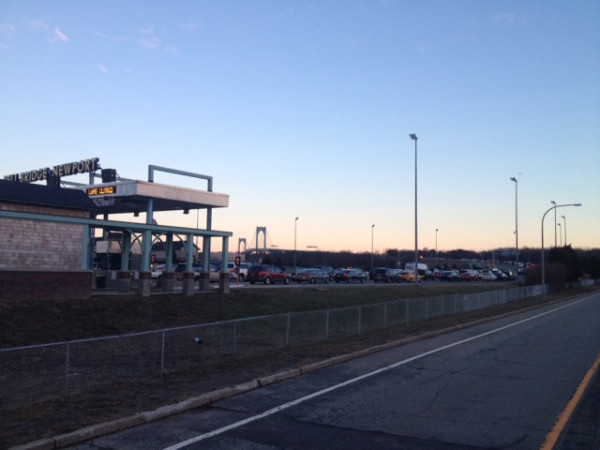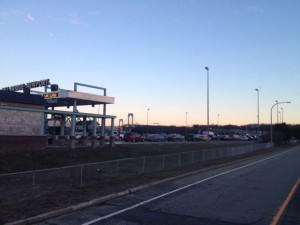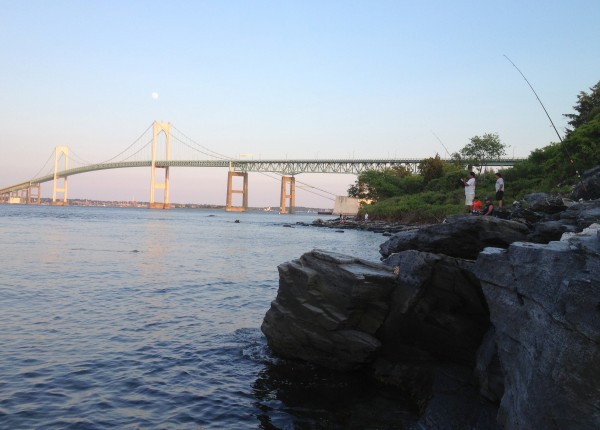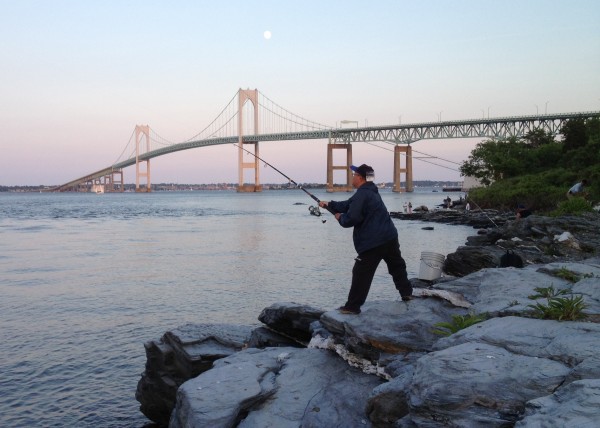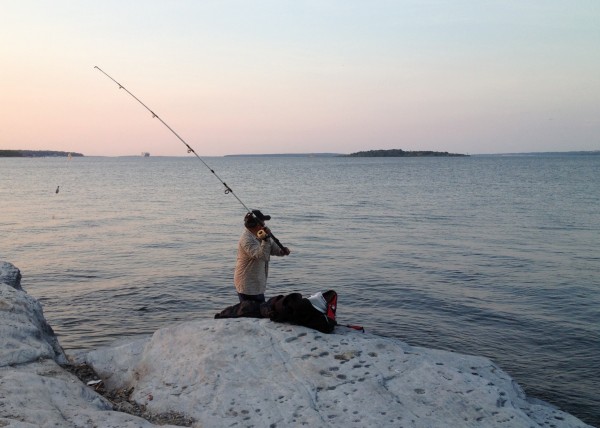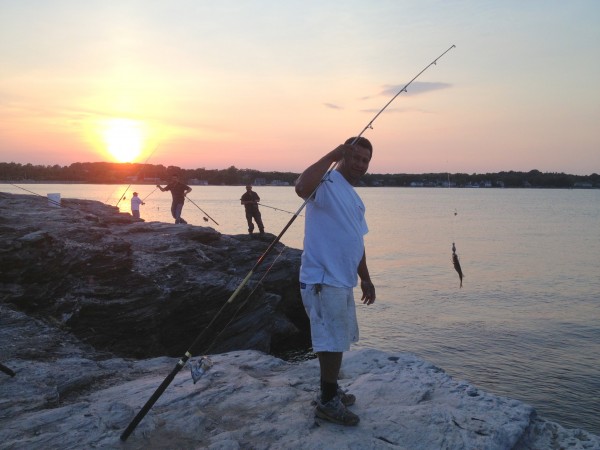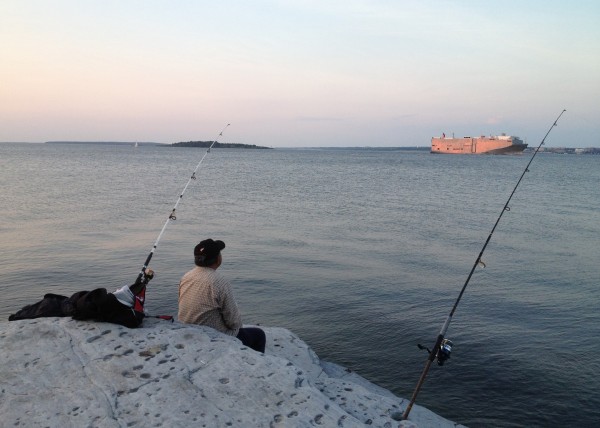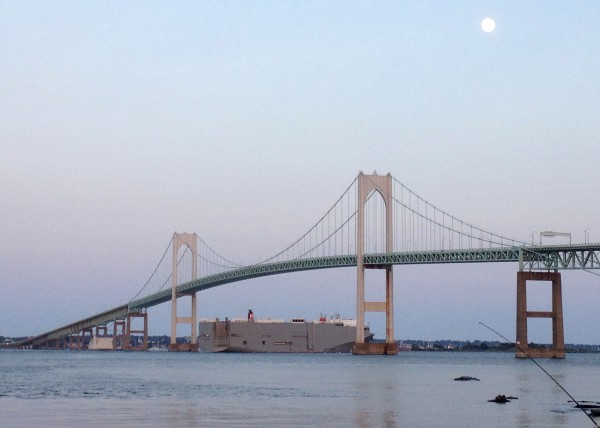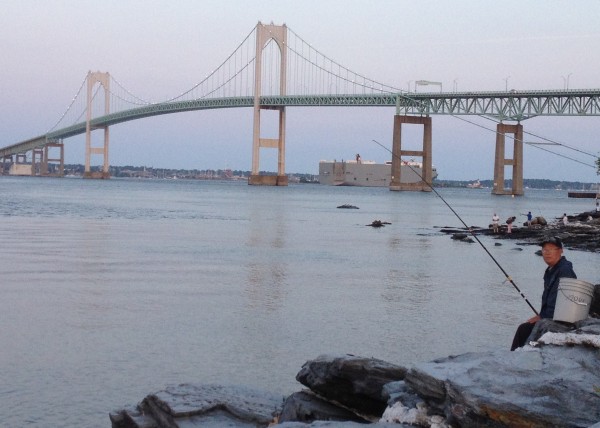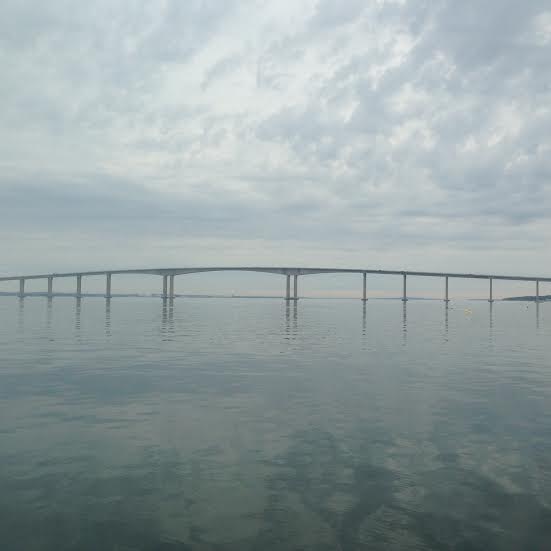
I work on the water just south of the Jamestown Verrazzano Bridge in the West Passage of Narragansett Bay. On most days, I enjoy the best views of Rhode Island. Recently though, it became the most tragic scene I can imagine.
From our boat, we noticed a car parked at the apex of the expanse, 135 feet above the water. There were several other cars stopped a little farther along, and through binoculars I could see people running toward the center. As we motored over, police cars and a fire engine arrived on the scene.
By the time we got close to the bridge, there was a body floating in the water. The harbormaster and Coast Guard lifted it into a rescue boat and raced off towards Plum Beach in North Kingstown, presumably the easiest place to meet an ambulance, though the haste was unfortunately a formality. The body had been floating face down for at least several minutes, what seemed to me like a lifetime. Another person had taken their life by jumping off a bridge in Rhode Island.
This was the second suicide from the Jamestown Bridge this year, according to statistics kept by the Rhode Island Turnpike and Bridge Authority. There has been one suicide so far on the Newport Pell Bridge and one on the Mount Hope Bridge. No one has committed suicide from the new Sakonnet River Bridge this year, but there has been one attempted suicide. In 2014, there were four suicides and 11 attempted suicides on RITBA bridges. Since 1980, there have been 36 suicides and 92 attempted suicides from the Newport Bridge, and 24 suicides and 25 attempts from the Mount Hope Bridge.
Bridge jumpers, as these suicidal souls are sometimes called, are a small percentage of the self-inflicted deaths that occur in the Ocean State every year. In 2014, there were four bridge suicides and 116 suicides in total. But jumping from a bridge may well be the most public form of suicide.
“You may end the pain for yourself but you spread it to so many other people,” said Denise Panichas, the executive director of the Samaritans of Rhode Island. “There are so many people affected … from the 911 operator, to the bridge employees and first responders and harbormasters and the people on and around the bridge.”
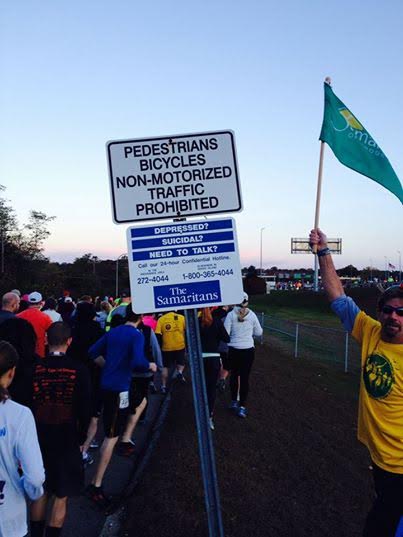
The Samaritans are famous for maintaining a hot line for desperate people to talk to other people. In places where there are high bridges, like Rhode Island, they also maintain highway signs urging people to call the hot line, and Panichas says they have proven effective.
“Everyone knows us from our signs on the bridges,” she said. “The signs have been up close to 38 years, almost as long as we’ve been around.”
The Samaritans of Rhode Island also sponsor the annual “Cross the Bridge to Hope” charity event. Participants run or walk over the Newport Bridge – which also boasts some of the state’s best views – to help raise money for suicide prevention in Rhode Island. You can support Team Samaritans by clicking here.
“So it’s both our curse and our hope,” Panichas said of the bridges.
The same could be said of the Rhode Island Turnpike and Bridge Authority.
“We are well aware of how serious an issue this is,” said James Manni, director of operations, safety and security for RITBA. Addressing it, he said, is a priority – including adding a new in-service training program with the Samaritans.
“We’ve had some basic training in the past but we actually want to take that a step further,” Manni said. The new training will include “proper protocols to follow, and also the proper things to say and do if you do encounter a suicidal subject.”
RITBA employees are often the first to learn of a suicidal person on a bridge, and sometimes the last to see them alive. Bridge workers have witnessed jumpers in person, and via security cameras, Manni said.
Manni was a Rhode Island State Trooper for 25 years before becoming head of security for the bridges. In 2001, a woman drove through a toll booth four times while he was parked there. “When we left within five minutes she jumped off the Newport Pell Bridge,” he said. “So we were being a deterrent without even knowing it.”
There are other deterrents, besides human presence and signage.
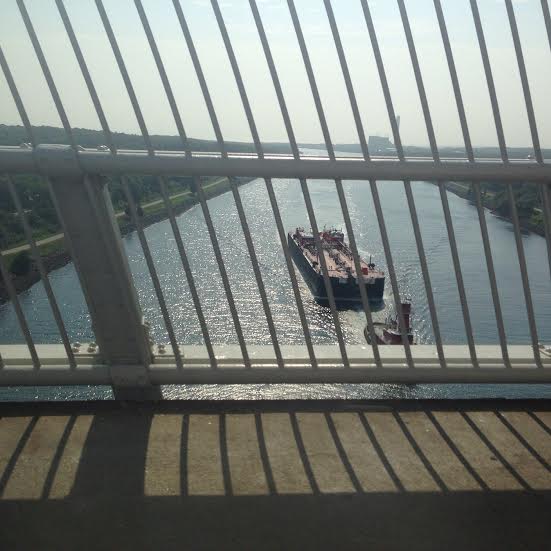
The Sagamore and Bourne bridges, that connect Cape Cod to the rest of Massachusetts, each have high fences that bend inwards, making jumping a much more difficult endeavor.
Stephanie Kelly, the executive director of the Samaritans on Cape Cod and the Islands, says the “suicide barriers” have been extremely effective at reducing the number of bridge jumpers.
“We’ve had one in five years,” she said. “1,000 percent I think they’ve been effective.”
The Bourne and Sagamore suicide barriers were the brainchild of Monica Dickens, who founded the Samaritans in the United States and in Cape Cod, said Kelly. “One of the most incredible things she did back then was realize that the Bourne and Sagamore bridges were meccas of suicide,” she said.
In 2012, Ithaca, New York, in conjunction with Cornell University, installed so-called “suicide nets” below bridges near gorges that had become suicide hot spots. 27 people, 15 of whom were students, committed suicide in the upstate college town between 1990 and 2000.
And the Golden Gate Bridge in San Francisco plans to install a $76 million stainless steel net 20 feet below the bridge that would extend out 20 feet on both sides. People can still jump, but the fall won’t be fatal.
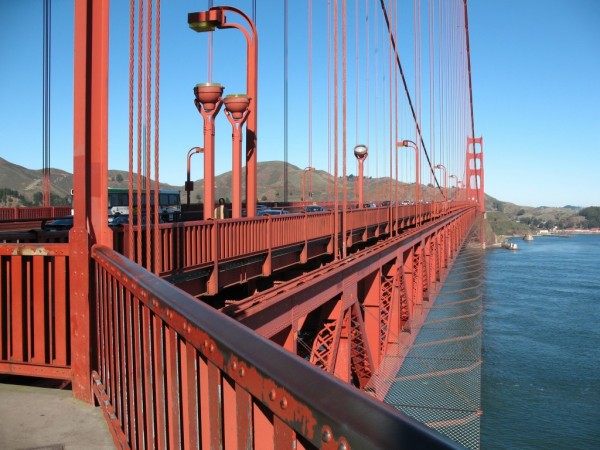
“Ever since the bridge was built we’ve had an issue with people committing suicide,” said Priya Clemens, a spokeswoman for the Golden Gate Transportation District. In 2014, there were 38 confirmed suicides and 161 attempts on the bridge, she said. Unlike bridges in Rhode Island, the Golden Gate Bridge is open to pedestrians. It is 3.1 miles long. The Newport Bridge is 2.1 miles and the Jamestown Bridge is 1.3 miles.
The suicide nets, said Clemens, are “something we wanted to a for a long time but we didn’t have the political will. Our board was willing to say this is a big public safety issue.”
Manni said RITBA has considered barriers and nets, as well.
“This is something that has been looked at and considered,” he said. “We are not opposed to that at all. We are willing to do anything to make this situation better.”
To date, RITBA doesn’t think barriers are the answer.
“By the time someone is standing on the center span of a bridge, you are pretty far into it,” said Manni. “We want to reach people before that.”
Panichas, of the Samaritans, said, “I am not an expert in the effectiveness of barriers. I’ll leave that to the experts.” But that she would prefer resources be put towards prevention and wellness. “In the end it’s about access to care,” said Panichas. “Medical care, a caring community and a caring family. Don’t look at the method. I’d rather they take that effort and put it into care.”
She added, “There are three things we know about the truly suicidal. They feel hopeless, they feel that no one cares if they live or die and they think they will be doing everyone a favor if they die. Do barriers remove the hopelessness? I always question whether a barrier on a bridge will remove the hopelessness.”

